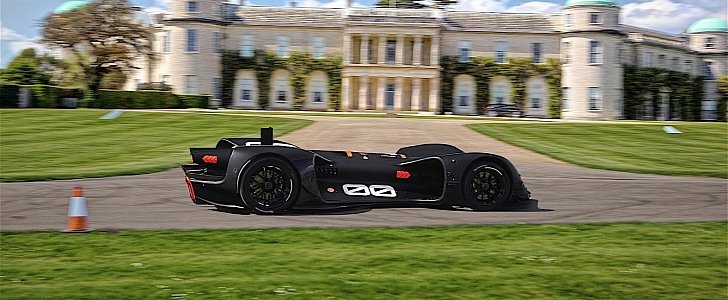Last weekend, the Pikes Peak Hill climb concluded with several noteworthy achievements. Volkswagen’s I.D. R set the all-time record, Bentley’s Bentayga recorded the fastest time for SUVs and Ducati got back on top with the Multistrada.
Next month, on July 12, the Goodwood festival os speed kicks off in the UK. Part of the festival is the traditional 1.16-mile race up a 304 feet (92.7 meters) hill. Tiny, compared to the 4,720 feet (1,440 meters) Pikes Peak, but a hill nonetheless.
And, for the first time in history, an autonomous car will be attempting to run such an upward course. It’s the Robocar, brain child of Daniel Simon, the man behind vehicular marvels in movies like Tron: Legacy, Oblivion or Captain America.
So far, Robocar has been doing courses all over the world, ahead of Formula E Grand Prix. Sometimes it faired well, sometimes it didn’t. Regardless, the car never attempted to go uphill on its own.
"The Goodwood hill climb presents a real challenge for level 4/level 5 autonomous driving systems," said in a statement Sergey Malygin, Chief of Software and AI at Arrival, the company in charge with creating the software needed by Robocar for the Goodwood challenge.
"It is a narrow track with complex geometry. Turns and hills with a great deal of tree coverage mean you can’t rely on GPS / RTK signal for localization. Use of all advanced sensors, including LiDARs and cameras with deep learning based computer vision methods are needed to perform well at this course.”
The Robocar is 4.8 meters long and 2 meters wide. It has no cockpit, obviously, and weighs only 1,000 kg. Four electric motors spinning the wheels, each developing 300kW, and a battery pack good for 540kW would make up the heart of the car.
With this hardware and its 1,200 Nm of torque, the machine is supposed to be capable of reaching a top speed of 322 km/h.
It uses 15 ultrasonic sensors, six cameras, five LIDAR and two radar systems to determine the car’s position and decide on the course to follow.
And, for the first time in history, an autonomous car will be attempting to run such an upward course. It’s the Robocar, brain child of Daniel Simon, the man behind vehicular marvels in movies like Tron: Legacy, Oblivion or Captain America.
So far, Robocar has been doing courses all over the world, ahead of Formula E Grand Prix. Sometimes it faired well, sometimes it didn’t. Regardless, the car never attempted to go uphill on its own.
"The Goodwood hill climb presents a real challenge for level 4/level 5 autonomous driving systems," said in a statement Sergey Malygin, Chief of Software and AI at Arrival, the company in charge with creating the software needed by Robocar for the Goodwood challenge.
"It is a narrow track with complex geometry. Turns and hills with a great deal of tree coverage mean you can’t rely on GPS / RTK signal for localization. Use of all advanced sensors, including LiDARs and cameras with deep learning based computer vision methods are needed to perform well at this course.”
The Robocar is 4.8 meters long and 2 meters wide. It has no cockpit, obviously, and weighs only 1,000 kg. Four electric motors spinning the wheels, each developing 300kW, and a battery pack good for 540kW would make up the heart of the car.
With this hardware and its 1,200 Nm of torque, the machine is supposed to be capable of reaching a top speed of 322 km/h.
It uses 15 ultrasonic sensors, six cameras, five LIDAR and two radar systems to determine the car’s position and decide on the course to follow.


